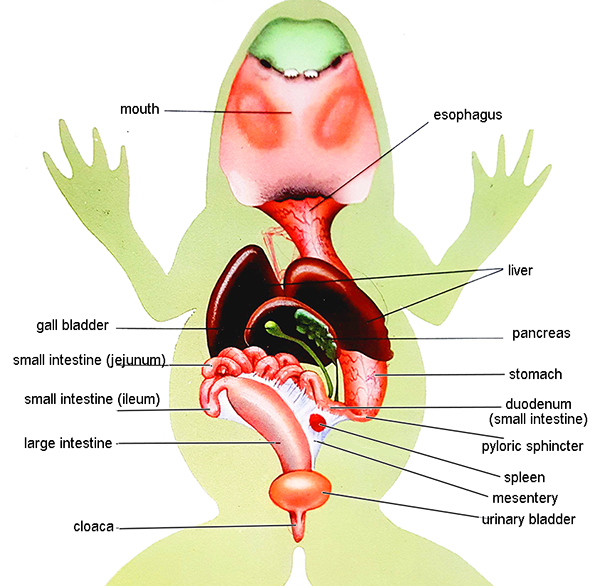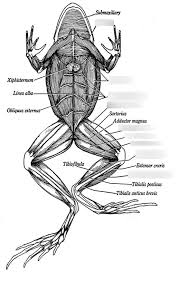The anatomy of a frog
0.0(0)
0.0(0)
New
Card Sorting
1/3
Earn XP
Description and Tags
(with pictures)
Study Analytics
Name | Mastery | Learn | Test | Matching | Spaced |
|---|
No study sessions yet.
4 Terms
1
New cards
Head
The head is the anterior part of the frog, containing sensory organs and the brain. It includes:
- Eyes: Provide binocular vision, adapted for detecting movement and depth perception.
- Nares (nostrils): Used for breathing; can close when underwater.
- Tympanic Membrane (eardrum): Detects sound vibrations.
- Mouth: Wide, equipped with a sticky tongue for catching prey and maxillary teeth for holding prey.

2
New cards
Trunk
The trunk is the central part of the frog's body, housing vital organs:
- Skin: Permeable and plays a crucial role in respiration and hydration. It contains glands that secrete mucus to keep it moist.
- Internal Organs: Includes the heart, lungs, liver, stomach, intestines, kidneys, and reproductive organs, each performing essential functions for survival.

3
New cards
limbs
Frogs have two pairs of limbs adapted for different modes of locomotion:
- Forelimbs: Shorter and weaker, used for support and balance during rest. They have four digits.
- Hindlimbs: Longer and more muscular, designed for jumping and swimming. They have five webbed digits, which increase surface area for efficient swimming.

4
New cards
What does Amphibia mean?
dual life